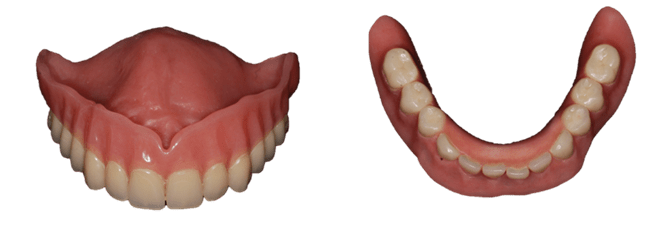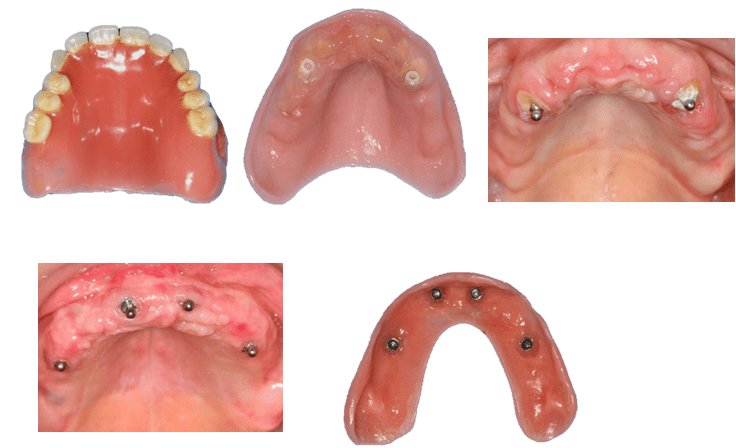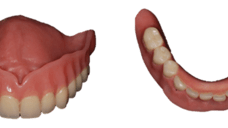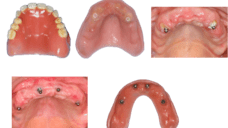-
0
Patient Assessment
- 0.1 Patient demand
- 0.2 Overarching considerations
- 0.3 Local history
- 0.4 Anatomical location
- 0.5 General patient history
-
0.6
Risk assessment & special high risk categories
- 5.1 Risk assessment & special high risk categories
- 5.2 age
- 5.3 Compliance
- 5.4 Smoking
- 5.5 Drug abuse
- 5.6 Recreational drugs and alcohol abuse
- 5.7 Parafunctions
- 5.8 Diabetes
- 5.9 Osteoporosis
- 5.10 Coagulation disorders and anticoagulant therapy
- 5.11 Steroids
- 5.12 Bisphosphonates
- 5.13 BRONJ / ARONJ
- 5.14 Radiotherapy
- 5.15 Risk factors
-
1
Diagnostics
-
1.1
Clinical Assessment
- 0.1 Lip line
- 0.2 Mouth opening
- 0.3 Vertical dimension
- 0.4 Maxillo-mandibular relationship
- 0.5 TMD
- 0.6 Existing prosthesis
- 0.7 Muco-gingival junction
- 0.8 Hyposalivation and Xerostomia
- 1.2 Clinical findings
-
1.3
Clinical diagnostic assessments
- 2.1 Microbiology
- 2.2 Salivary output
-
1.4
Diagnostic imaging
- 3.1 Imaging overview
- 3.2 Intraoral radiographs
- 3.3 Panoramic
- 3.4 CBCT
- 3.5 CT
- 1.5 Diagnostic prosthodontic guides
-
1.1
Clinical Assessment
-
2
Treatment Options
- 2.1 Mucosally-supported
-
2.2
Implant-retained/supported, general
- 1.1 Prosthodontic options overview
- 1.2 Number of implants maxilla and mandible
- 1.3 Time to function
- 1.4 Submerged or non-submerged
- 1.5 Soft tissue management
- 1.6 Hard tissue management, mandible
- 1.7 Hard tissue management, maxilla
- 1.8 Need for grafting
- 1.9 Healed vs fresh extraction socket
- 1.10 Digital treatment planning protocols
- 2.3 Implant prosthetics - removable
-
2.4
Implant prosthetics - fixed
- 2.5 Comprehensive treatment concepts
-
3
Treatment Procedures
-
3.1
Surgical
-
3.2
Removable prosthetics
-
3.3
Fixed prosthetics
-
3.1
Surgical
- 4 Aftercare
Provisionals
Key points
- A provisional prosthesis is an excellent method to evaluate esthetics, function and comfort for an edentulous patient
- A provisional prosthesis can indicate where patient expectations can and cannot be met
- A provisional prosthesis can assist in finalizing a patient-centered treatment plan
Provisionals - multifunctional use
Conceptually, a provisional prosthesis for an edentulous patient is a convenient tool that offers the patient a satisfactory level of function and esthetic appearance while definitive treatment is undertaken.
Provisional prostheses assist both dentist and patient perceptions regarding what the final treatment outcome is likely to offer. A close match between the provisional and final prosthesis enhances the patient's understanding of the esthetic and functional attributes of the final treatment outcome with the definitive prosthesis. Moreover, any required revision of the treatment plan can be made pro-actively at this stage, therby precluding any irreversible treatment therapeutic procedures.
A provisional prosthesis may also be utilized as part of the surgical guide fabrication protocol. It can also be considered for a completely edentulous arch as part of an immediate loading protocol (see also sections on treatment options and treatment protocols).
The use of CT-based planning software facilitates the fabrication of a laboratory-processed provisional prosthesis, although a patient's functioning denture may also be used for this purpose.



